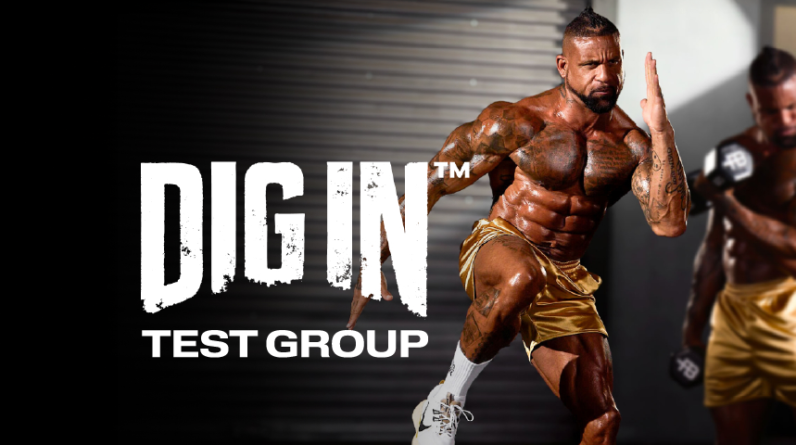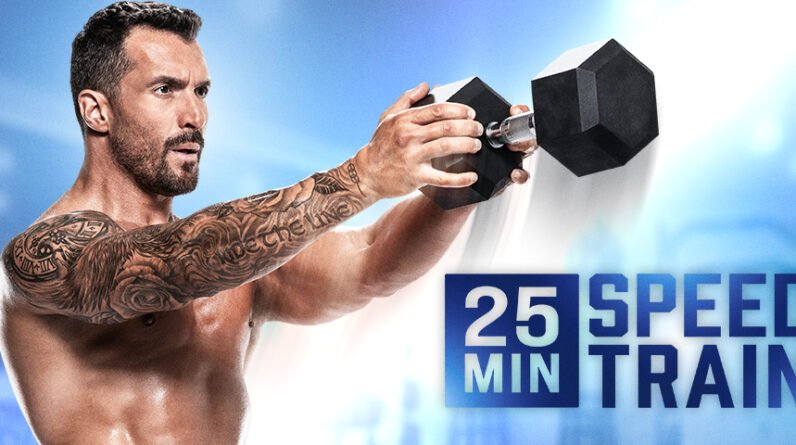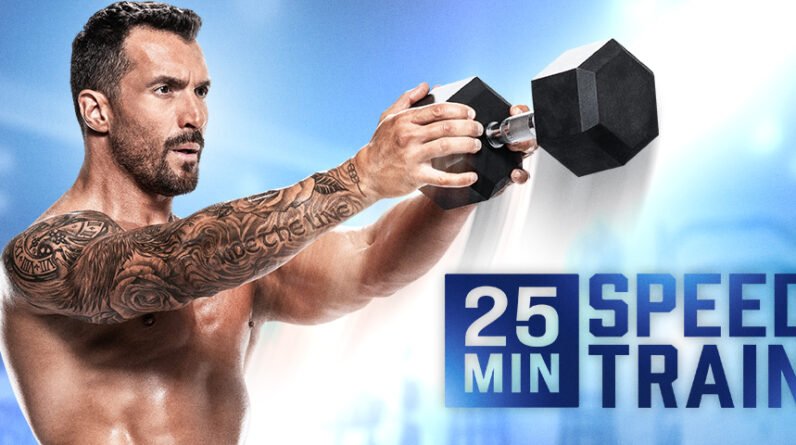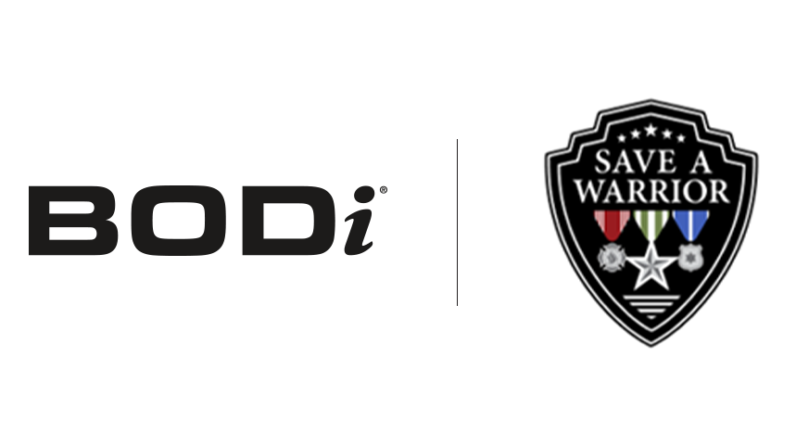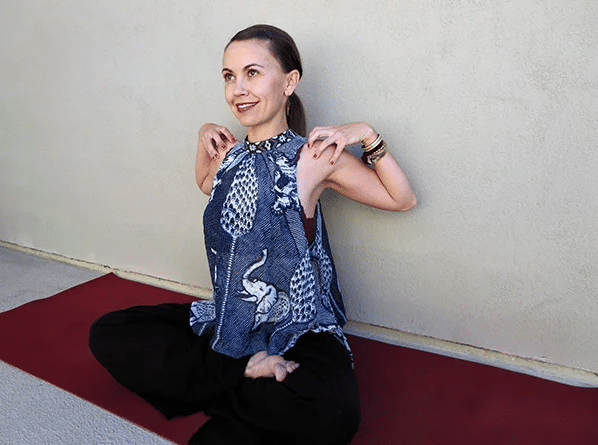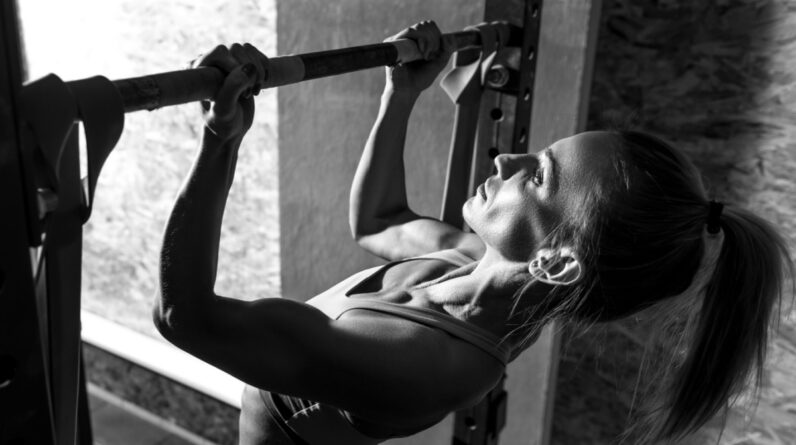
Ask 1,000 random lifters if they desire more muscular arms and very few (honest) souls will tell you “no.” The biceps are among the most visible body parts, and an impressive set of guns will usually make heads spin.
But there are other benefits to biceps training beyond adding slabs of meat under your sleeves — improved strength, shoulder stability, and joint health. (1) Heck, you could even use it to shed some fat and preserve lean muscle while cutting calories.
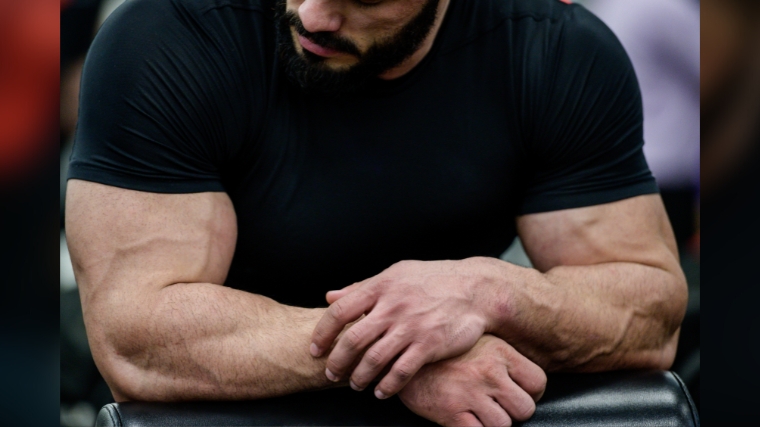
People usually envision biceps training either as an afterthought after training a larger body part like their back or check, or they approach it as part of a pure arms-only gym session consisting primarily of single-joint (isolation) exercises.
But if you’re smart and creative, or if you’re in a situation with next to no equipment, you can bypass the weights and provide your body with a refreshing and effective workout yielding loads of benefits. Whether you don’t go to a gym, are traveling abroad, or want to spice things up, try one of these weight-free workouts to get your biceps training to the next level.
Best Biceps Workouts
Best Bodyweight-Only Biceps Workout
Training without weights is getting back to the roots of training — being able to master your own body. If you’re tired of lifting iron and want to get back in touch with your primal self, try this routine. It would be a shame to reduce yourself to exclusively single-joint (isolation) exercises, because the biceps are involved in a lot of movements other than simple arm flexion.
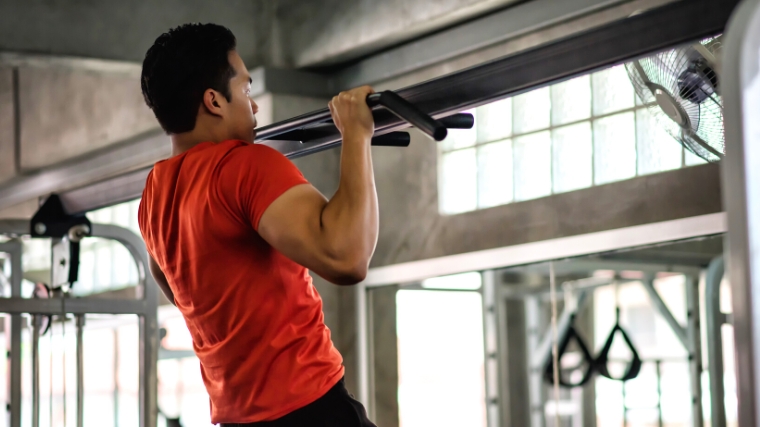
This workout uses a combination of multi-joint exercises tweaked to focus more on the biceps, as well as isolation movements. This will cover all of this muscle’s functions while providing the best stimulus for strength, muscle growth, and fat loss for your body. Indeed, multi-joint exercises are generally better for strength adaptations and calories spent, while single-joint work is great to improve the mind-muscle connection or to bring up a specific weak point.
The No-Weight Workout
Perform this workout once per week for optimal results, after a warm-up. Since you can’t increase the weight to progress, you’ll have to use other methods. When you can comfortably perform the desired numbers of repetitions per set, increase it to the upper bracket of the upper range. For instance, if an exercise calls for 12 to 15 reps, once you can do all your sets of 12, try to bump them up to 15. Then, you can try to add another set. Finally, you can also reduce rest periods progressively.
Commando Chin-Up
Position yourself under a pull-up bar and grab it with your thumbs facing you and you hands touching each other. Hang dead from the bar and brace your core to stabilize yourself. Pull your shoulder blades down to initiate the movement and bend your elbows to elevate yourself towards the barbell, and aim your head toward the left side of the bar.
Aim to touch the bar with your right shoulder. Lower yourself down with control back to the starting position and repeat, this time with your head toward the right side of the bar and aiming to touch it with your left shoulder. Repeat for the desired amount of reps. The next set, switch hands so that the one that was the closest to you on the pull-up bar is now the farthest.
- Sets and Reps: 4 x 4-8
- Rest time: Three minutes between sets.
Headbanger Chin-Up
Position yourself under a pull-up bar and grab it using a nearly shoulder-width supinated grip (palms facing towards you). Brace your core, pack your shoulder blades together and down, and pull yourself up until your arms are approximately at a 90-degree angle.
Hold that position and start moving your body towards and away from the bar by extending and flexing the arms. No other body part should move and it should look like you were trying to headbutt the bar — don’t do it, though. Repeat this movement for the target amount of time. Because this can be a challenging exercise, begin with a shorter range of motion (extending your arms only partially) and gradually work toward full extension.
- Sets and Reps: 3 x 30-60 seconds
- Rest time: Two minutes between sets.
Towel Curl
Grab a sturdy towel with both hands and twist it until it forms a noodle or spiral. Sit on a chair or a bench, with your back flat and your chest high. Place the center of the towel under one foot and hold an end in each hand.
Pin your elbows to your side and start flexing your arms towards your face against resistance applied by your foot. When you’re at the top and your hands are near your shoulders, reverse the motion and slowly extend your arms, still providing tension through your foot.
- Sets and Reps: 3 x 10-15
- Rest time: 90 seconds between sets.
Lateral Plank Walk
Get in a plank position with hands on the floor, both arms extended, and your legs straight. Brace your core, pack your shoulders, and keep your body in a straight line. Take one step to the side with your right arm and right foot. Follow in the same direction with your left hand and foot.
Repeat for a few steps in the same direction, then reverse to the move in the opposite direction. Continue for the desired duration.
- Sets and Reps: 3 x 60 seconds
- Rest time: 60 seconds between sets.
Inverted Row
Position yourself under a doorway pull-up bar set low, a dip bar, under a table, or a sturdy broom positioned between a pair of chairs. Grab the bar using a shoulder-width, pronated grip (palms facing away from you). Brace your core and flex your legs so your body forms a straight line.
Bend your elbows and pull your chest towards the bar, aiming to touch it the bar with your chest. Lower yourself with control until your arms are extended and repeat for as many reps as you can. Try to beat your score each session.
- Sets and Reps: 2 x maximum reps until muscular failure.
- Rest time: Two minutes.
Best Resistance Band Biceps Workout
Bands are a very interesting lifting tool because they provide accommodating resistance — tension and force increases as the band is stretched farther. This type of resistance allows for a unique feeling and more training possibilities. It’s also an effective way to complement bodyweight training because bands allow for a wider exercise election and better focus on some muscles. Band training is also invaluable for joint and tendon health. (2)
With such a strong case in favor of resistance band training, it’s time to try this biceps workout to gain some strength, build muscle, and help to shed fat.
One-Band Biceps Workout
Perform this workout once per week for optimal results, after a warm-up. To progress, you can use a heavier band, or a combination of several smaller bands to provide enough resistance. You can also play with volume. For instance, if an exercise calls for 12 to 15 reps, when you can do all your sets of 12, try to bump it up to 15. Then, you can try to add another set. Finally, you can also reduce rest periods each week.
Band-Assisted Chin-Up
Loop a band around a pull-up bar. Hang from the bar using a supinated grip (palms facing you) with your hands close to shoulder-width. Place your feet on the band, keeping your legs straight. Brace your core, puff your chest, pull your shoulder blades down, and pull yourself towards the bar by bending your elbows until you touch the bar with your chest.
Lower yourself with control until your arms are straight. Repeat for the desired amount of repetitions. The band will make the exercise easier at the start of the movement, allowing you to perform more repetitions and slightly favor your arms in the movement.
- Sets and Reps: 3 x 8-12
- Rest time: Two minutes.
Single-Arm Band Hammer Curl
Stand tall and place one end of the band under your foot. Grab the other end with your working hand. Keep your elbows at your sides. Bend your elbow and flex your arm toward your face. Only your forearm should move, not your shoulder.
Contract for a second at the top, then lower with control to the starting position. Perform all repetitions on one side before switching hands. To increase the resistance, hold both ends of the band in one hand.
- Sets and Reps: 3 x 12-15
- Rest time: 60 seconds between sets.
Band Concentration Curl
Attach a band to a sturdy object around ground-level. Sit on a chair near the band and grab the band with your closest arm, placing your elbow on the inside of your thigh, just above your knee. Widen your stance to make room for your arm. Bend your elbow and flex your arm toward your face, squeezing for a second at the top.
Slowly extend your arm afterwards until it is straight again. Repeat for the desired amount of reps before switching arms. Make sure that no body part other than your forearms are moving during the exercise — don’t squeeze with your knee to assist your arm. To increase the difficulty, sit farther from the band’s attachment.
- Sets and Reps: 3 x 10-12
- Rest time: 60 seconds between sets.
Band Reverse Curl
Step in the center of a band and grab the ends with both hands using a pronated (palms facing down), shoulder-width grip. Stand tall, brace your core, and pack your shoulder blades down. Bend your elbows by flexing your biceps to pull the band toward your face. Only move your forearms, don’t allow your elbows to move forward. Keep your palms facing down during the exercise.
Lower your hands with control until your arms are straight, and repeat for the desired amount of repetitions. For a more intense exercise and a serious burn, you can immediately add several partial range repetitions, coming up only halfway to fully finish off your arms.
- Sets and Reps: 3 x 15-20
- Rest time: 90 seconds between sets.
The Biceps Muscles
The biceps are probably the most known and most frequently flexed muscles. Developed biceps are mostly coveted for an aesthetic purpose, but they also cover an array of functions for health and performance.
Biceps Brachii
The biceps brachii is the biggest arm flexor, the ball of meat on your upper arm. Composed of two heads — hence its prefix, “bi” — the biceps is attached from the ulna (forearm bone) to the scapula (shoulder blade) going through the shoulder complex.
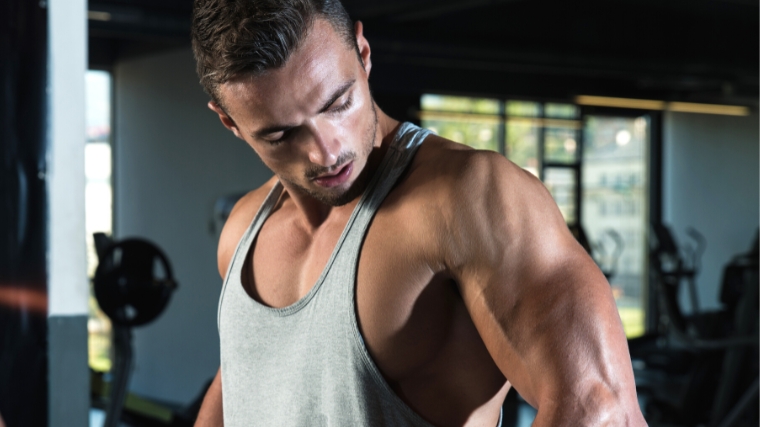
It is mostly known as an arm flexor and supinator (rotating the palm towards your face), but also contributes to raising your arms and stabilizing your shoulder and humerus (upper arm bone). Having healthy and strong biceps is a prerequisite for having upper-body strength and health.
Brachialis
This muscle is a part of the upper arm complex, and is located directly under the biceps. It goes from the elbow to the upper humerus, and is only involved in elbow flexion (bending the arm). It’s actually the strongest arm flexor, not the biceps.
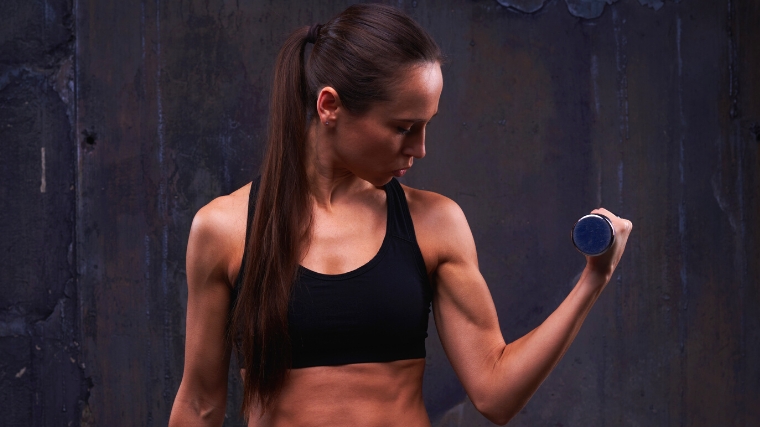
Developing this muscle will also help if you’re only interested in looks. Making it bigger can actually increase the “peak” of your biceps, by pushing it higher. When you’re lean enough, you can also see it for a truly impressive set of guns. To emphasize this muscle, assume a neutral (hammer) grip during curls.
Brachioradialis
The biceps’ other friend, the brachioradialis, is also attached from the ulna to the humerus. It’s the biggest and strongest forearm muscle. It works synergistically with the biceps and the brachialis, assisting in forearm flexion, supination, and pronation (rotating the palms away from you).
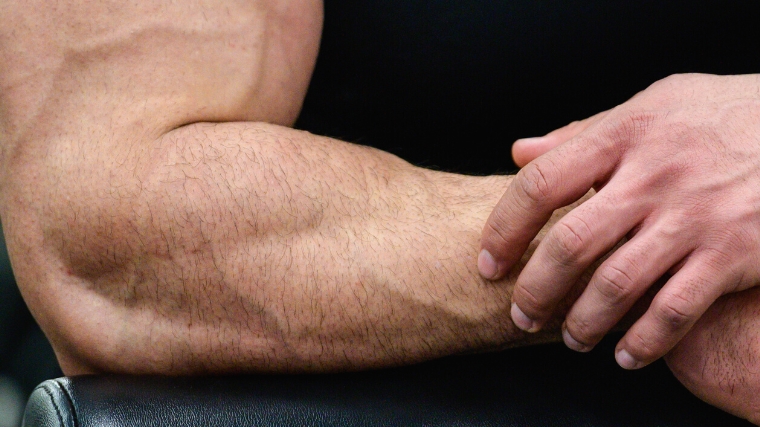
Having big and strong forearms is useful for many exercises, but can also serve as a visual illusion to compensate for shorter biceps by making them look bigger. You emphasize this muscle with a pronated (palm down) grip.
Biceps Warm-up
Warming up before a workout can improve your performance while minimizing connective tissue strain and risk of injuries. (3) It’s especially true before doing biceps, as the elbow is a notoriously sensitive joint, and some biceps exercises involve the shoulder complex — the most unstable joint in the entire body.
A good biceps warm-up should at least mobilize your biceps and triceps, but if the exercises require other body parts, make sure to include them as well. Here’s a complete resistance band warm-up to prime your body before a biceps workout.
Biceps Band Warm-up
- Band Over-and-Back: Grab a band with both hands, using a very wide and pronated (palms down) grip. Stand tall, then hinge at the hips to slightly bend forward while keeping your back flat, and hold this position. While keeping your arms straight, raise the band over your head, then back down to your lower back. Return to the starting position by rotating your arms, still keeping them straight and under tension. Perform 15 reps before moving to the next exercise.
- Band Pull-Apart: Stand with a resistance band in your hands, palm downs. Raise your arms to shoulder level, in front of your chest. Pull the band with your hands, bringing them to your sides until it touches your chest. Keep your arms straight the whole time. Return to the starting position. Perform 15 reps before moving to the next exercise.
- Band Row: Anchor the band to a sturdy item, just under chest-height. Stand tall with your chest high and grab it using a neutral grip (palms facing each other). Pull with your elbows and squeeze your back as hard as you can until your hands are at your sides. Revert the motion with control. Perform 15 reps before moving to the next exercise.
- Band Curl: Step into the band, hold it with your palms upwards, arms extended. While keeping your body braced, curl the band toward your face and squeeze your biceps. Extend your arms with control and perform 15 reps before moving to the next exercise.
- Band Pressdown: Attach the band high, at least to eye-level. Hold the ends with a pronated grip. Slightly bend forward at your waist and glue your elbows to your ribs. Completely extend your arms down, only moving your forearms, and squeeze your triceps. Bring your hands back to your chest for a total of 15 repetitions, and perform the entire circuit one more time for a thorough warm-up.
Arm Yourself With Bigger Guns
No weights? No problems. You don’t need them to fill your sleeves. Performing these no-weight biceps workouts can increase your arm size, as well as your strength, and contribute to shedding some fat in the process. This body part might be eye-catching, but there’s more to biceps training than meets the eyes.
References
- Rodosky MW, Harner CD, Fu FH. The role of the long head of the biceps muscle and superior glenoid labrum in anterior stability of the shoulder. Am J Sports Med. 1994 Jan-Feb;22(1):121-30. doi: 10.1177/036354659402200119. PMID: 8129095.
- Kim GJ, Oh H, Lee S, Lee K, Kim K. Effects of resistance exercise using the elastic band on the pain and function of patients with degenerative knee arthritis. J Phys Ther Sci. 2020 Jan;32(1):52-54. doi: 10.1589/jpts.32.52. Epub 2020 Jan 22. PMID: 32082029; PMCID: PMC7008024.
- Fradkin AJ, Zazryn TR, Smoliga JM. Effects of warming-up on physical performance: a systematic review with meta-analysis. J Strength Cond Res. 2010 Jan;24(1):140-8. doi: 10.1519/JSC.0b013e3181c643a0. PMID: 19996770.
Featured Image: YAKOBCHUK VIACHESLAV / Shutterstock


